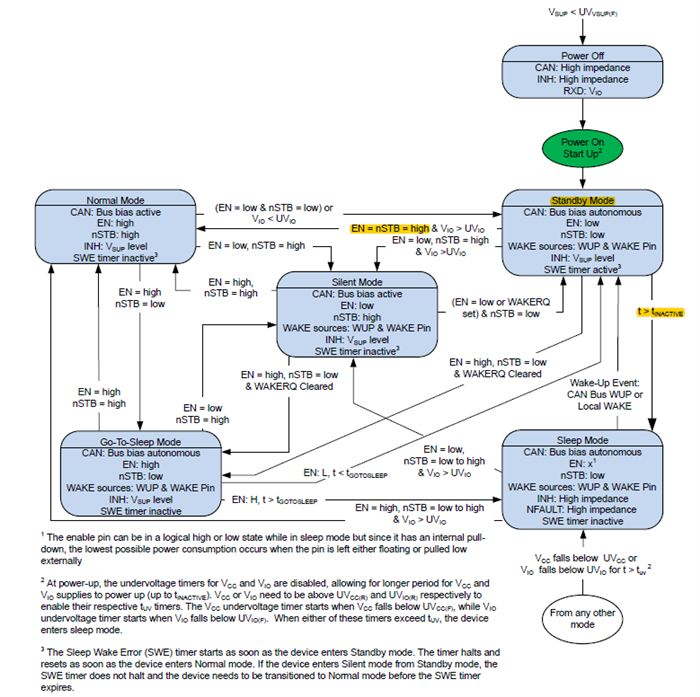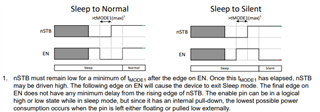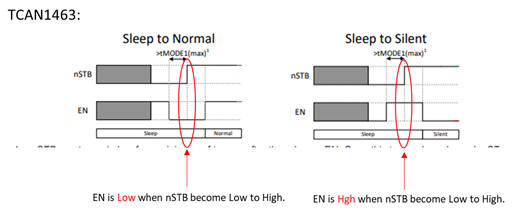Hi,
I have a question about Standby Mode.
If "t > tINACTIVE" and " EN = nSTB = high & VIO > UVIO" become true at the same time, which mode is next?

--2022.10.18 add--
I would like to confirm that "nSBT is always low immediately after transitioning from Standby Mode to Sleep Mode".
If nSTB=H immediately after transitioning from Standby Mode to Sleep Mode, a special operation of setting nSTB=L once and then setting nSTB=H again is required to transition to another Mode.







